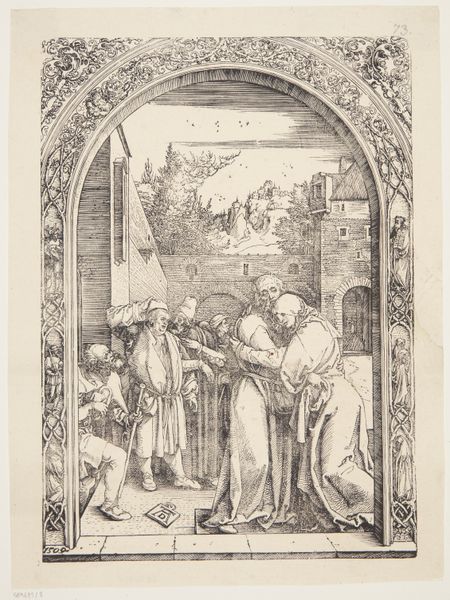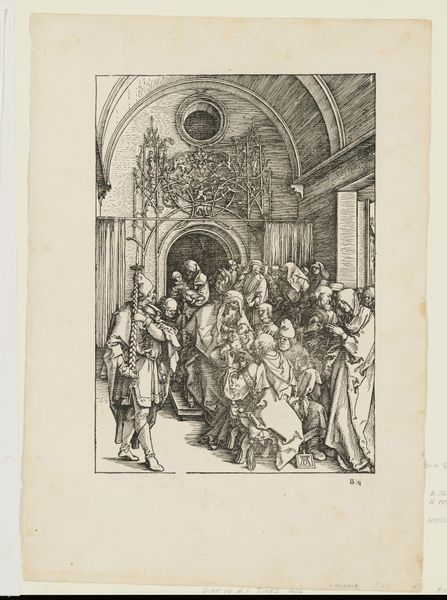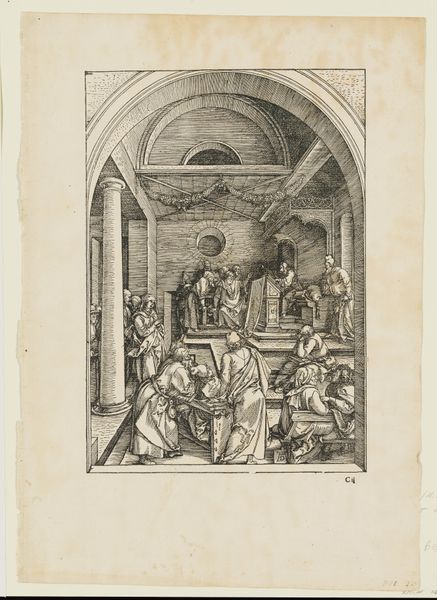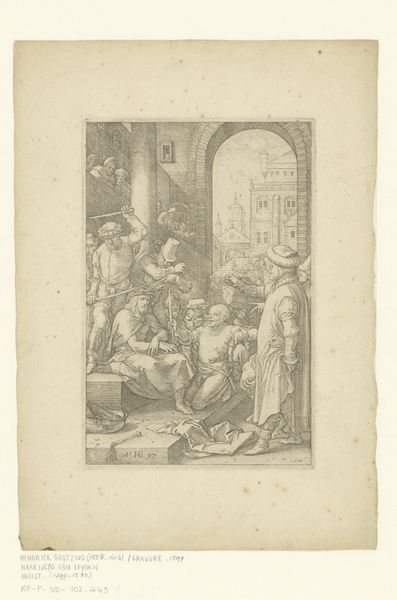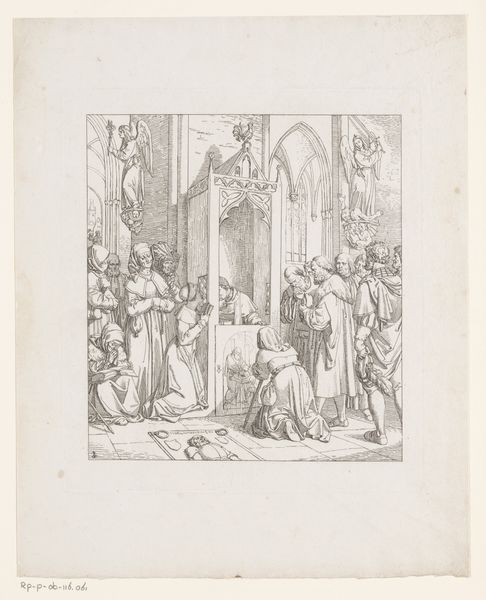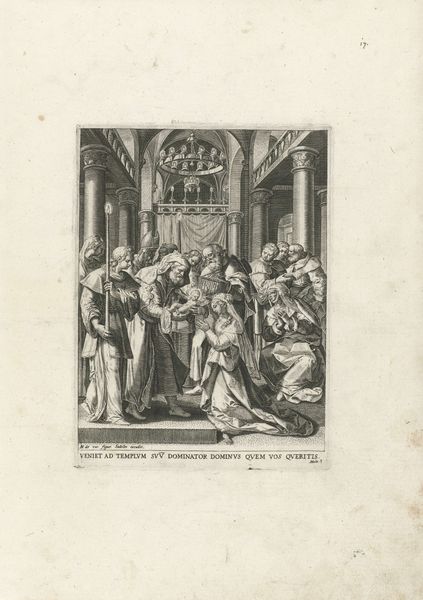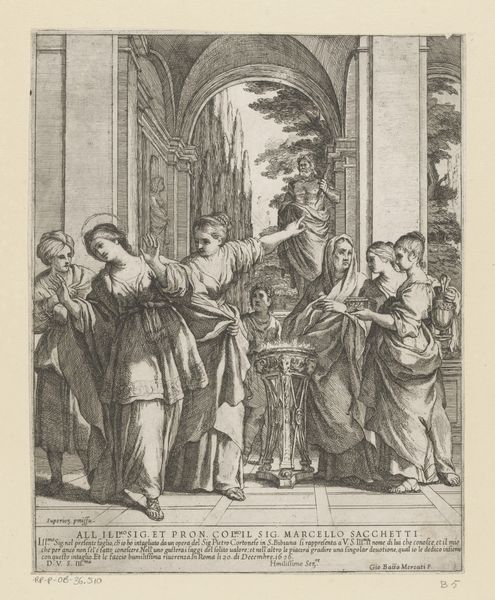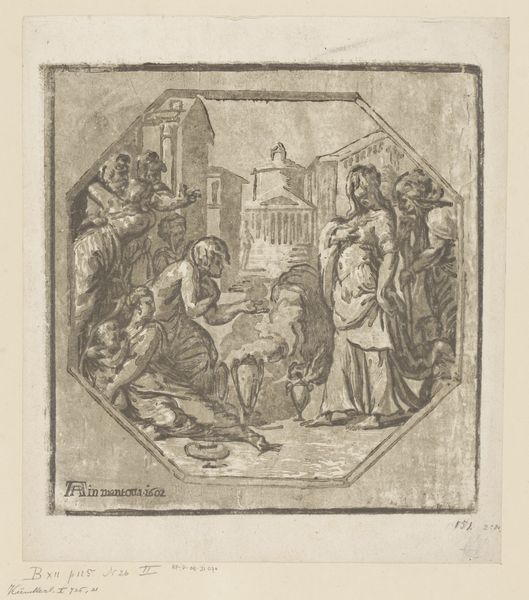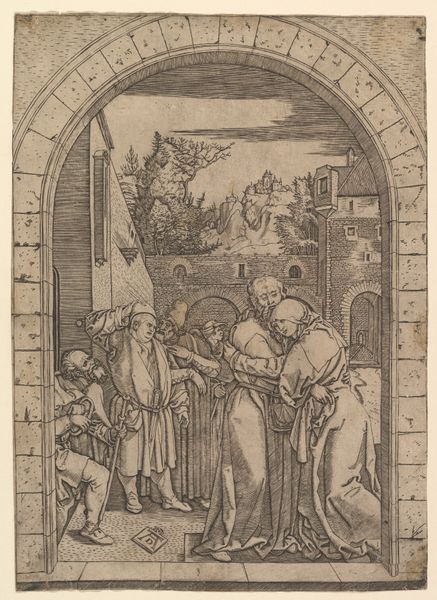
Jaochim and Ann under the Golden Gate Possibly 1504 - 1511
0:00
0:00
print, woodcut
#
narrative-art
# print
#
figuration
#
woodcut
#
line
#
history-painting
#
northern-renaissance
Dimensions: 11 3/4 x 8 3/16 in. (29.85 x 20.8 cm) (image)
Copyright: Public Domain
Editor: This is Albrecht Durer’s “Joachim and Ann under the Golden Gate,” likely made between 1504 and 1511. It’s a woodcut print. There's a real sense of intimacy in the center of this busy scene, with Joachim and Ann embracing. What do you see in this piece? Curator: I see a potent narrative intersection of the personal and the political, typical of Dürer. He masterfully weaves together the biblical narrative of Joachim and Ann—the parents of the Virgin Mary, who conceived her miraculously in old age—with the social and religious anxieties of his time. The woodcut medium itself democratizes the image, making it accessible. Editor: Accessible how? Curator: Well, prints, especially woodcuts, were a way to disseminate ideas more broadly in the 16th century. They weren't limited to the wealthy elite, like paintings often were. Think about the implications for the Reformation – how easily information, or propaganda depending on your point of view, could spread. Now, consider how Durer frames this seemingly personal, devotional scene, within that context. Editor: So, it’s not just a sweet image of reunited parents. Curator: Exactly! This woodcut then, becomes part of a much larger conversation about faith, power, and access. Think about who is represented and who is missing; and whose stories get to be told? Whose stories are considered worthy? These choices reinforce societal hierarchies, but they also allow for critical engagement. And Durer's skill ensures this image, despite its religious context, remains a profound piece of human storytelling. Editor: It’s incredible to realize how such an old piece of art can still speak to modern issues of representation. Thanks for showing me how this image participates in that conversation! Curator: Indeed! And those visual dialogues across centuries remind us that art is perpetually a lens through which we can examine ourselves and our world.
Comments
No comments
Be the first to comment and join the conversation on the ultimate creative platform.
